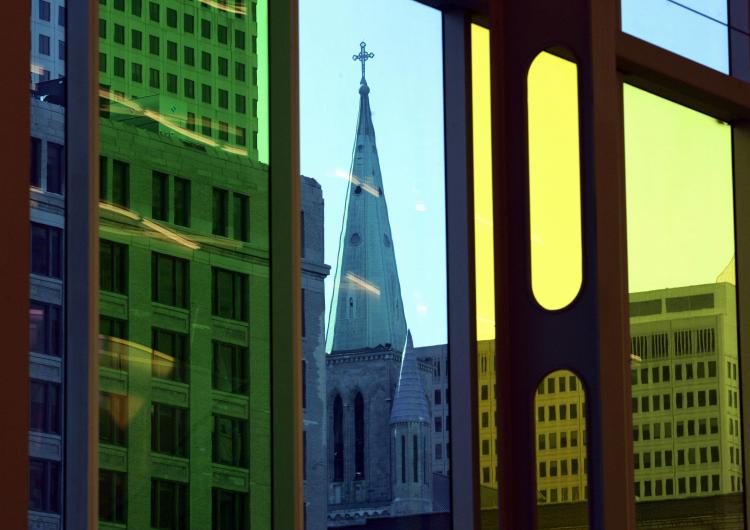It’s funny how a city’s nickname can indeed suit it well. The city of Montreal in Canada is at times referred to as the ville aux cent clochers (the hundred-bell-tower city). Up until a few decades ago the Catholic church still played a very important role in the largest French-speaking city in North America.
The city’s layout says a lot about it. Drive around Montreal’s older quarters and you’ll see a church, an elementary school, a park, and most likely a grocery store close by.
“It stems from the people’s desire to unite around the school, around the church, around the stores. We call that a parish,” describes Father Hamelin from Côte-des-Neiges, a parish in central Montreal that has now become one of Canada’s most multicultural areas.
“It allows people to stay at the same place, to have services at arm’s length instead of obtaining them elsewhere, like downtown,” Hamelin said. “It creates a little community. The parish becomes a community where all possible services are offered. People get to know each other more. They meet at church, they meet at the school’s parents meetings, they meet at the pharmacy, at the bank.”
Other factors also helped to cement relationships between people.
“As my parish was mostly composed of French speakers, we had a lot of friends around,” explains Mrs. Trudeau, who grew up in the years before WWII in Notre-Dame-de-Grâce, a parish just down the road from Côte-des-Neiges.
Up until the 1970s, while Montreal was Canada’s largest city, residents could well feel they lived in a village rather than a big urban city.
“We had a village’s mentality while remaining in town, while remaining in Montreal. Each parish had all the services. They were all pretty much autonomous. […] People would stay there. They did not have to go out. They would go to town only when they needed to shop,” said Father Hamelin.
“We were proud of our neighborhood and we didn’t feel the need to go out elsewhere,” shares Mrs. Trudeau. “[We would not go out] often because we had our friends around and our parents. We would rarely go out. Sometimes, when I was a bit older, I would go to the movie theater, but we would rarely go far from home.”
“I felt that I lived there, and that it was my way of living,” she said. “There were a whole of games organized in schools and we would play for the parish. […] We were proud of our neighborhood and we didn’t feel the need to go out elsewhere.”
This feeling of belonging and community also translated into after-class activities such as sports.
“The school-church link being very strong, once school was over the kids would stay in the schoolyard and have fun. Teachers and religion would take care of them, be there with them. It created a big family,” said Hamelin.
With hockey being Canada’s national sport, each schoolyard usually had its own ice rink, and each parish would organize their own team, according to Mrs. Trudeau.
With the decrease in religious practice in the province of Quebec and significantly fewer people attending Sunday mass, churches are at times renovated into condos, and hockey teams are now formed at the municipal district level instead of at the parish level. Yet as you drive around Montreal’s older residential areas today, you will stumble upon a architectural pattern that endured the changes in social trends, habits and ideals: the same old church, sided by the same elementary school and the same park, all witnesses that the times are a-changing.




